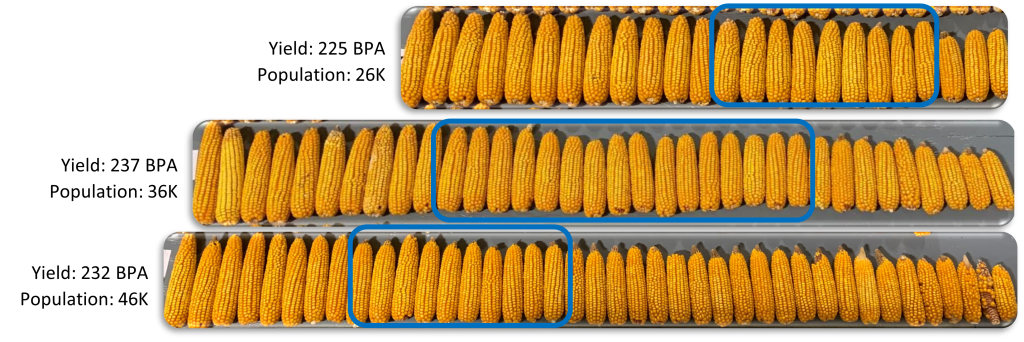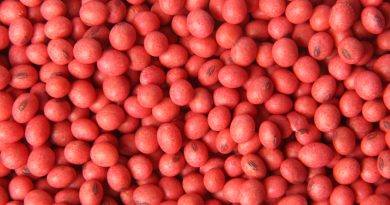Key Drivers for Corn Population
Every hybrid responds to population densities differently, and this response is closely tied to yield level. Population in a cornfield is stress each individual plant must endure as it competes for sunlight, moisture and nutrients. Selecting the ideal population for a given hybrid in a single field is challenging, let alone recommending a population over many fields of similar soil types. It’s important to understand the key drivers for corn population. This is one of the many reasons we provide ranges for each corn hybrid. At Burrus, we conduct population trials at many locations and different yield levels. The goal is to ensure the proper hybrid is on the right acre to maximize overall performance and consistency.
Optimum Ear Size
Throughout our testing, we have embraced a concept called optimum ear size (OES). OES recognizes each hybrid has a specific amount of starch each plant will make when most efficiently using resources. This is balanced with the most efficient use of space with neighboring plants. The aim of this concept is to maximize individual ear consistency throughout the field. Despite higher pops having greater total number of ears per acre, there are only enough resources to support a given population. Generally, maximum yield for a particular environment is obtained where we have the greatest ear consistency in population.
What about the old adage that we need a little tip back to maximize yield? Minor tip back is acceptable, see in the figure below higher yields were obtained where ears had minor tip back. Yields were significantly lower in the example below, where there was no tip back present. OES is representative of normal growing conditions at an anticipated yield level; however, ear weights may exceed a given range under more favorable growing conditions.

Agronomic Ramifications
We need to consider the agronomic ramifications of excessive populations for a given hybrid. These results can present themselves in various ways. For an example, it is well understood that as planting densities increase so does plant height. This can lead to plants susceptible to lodge either through spindlier stalks or stalk cannibalization if there are not adequate resources. There are hybrids in which we can obtain higher yields at higher populations, but if it results in increased lodging, that is an undesirable population to utilize.
Excessive stress can also present itself through poor pollination and ear fill. At excessive populations, pollen shed can move ahead or complete before all silks emerge. The result is scattered kernel set on the ear or unpollinated ear tips and butts. When it comes to ear fill and development, ears can be successfully pollinated, but if there are not enough resources to support developing kernels they can abort. This is observed through shrunken or translucent kernels on the ear tip (nosed back) or on one side of the ear (zippered/bellies).
Burrus publishes population ranges for each hybrid by yield level in our Product Selection Guide; however, your Burrus Representative can provide greater detail and granularity to the OES process. A reliable way to get a satisfactory outcome with corn population is to look at the productivity level of the field. Identifying the key drivers of corn population and matching a product to an appropriate yield goal sets the framework for dialing in the correct population.






